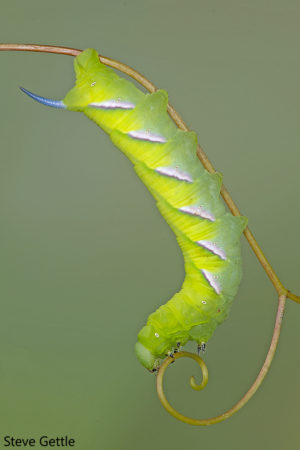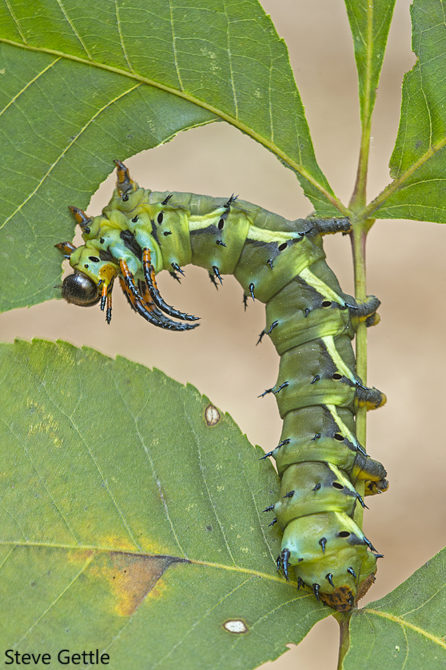While attending Mothapalooza the last couple of years I saw the work of Sam Jaffe of the Caterpillar Lab and became interested in trying to photograph these amazing creatures. As luck would have it a couple of weeks ago I was invited to attend a smaller satellite Caterpillar event put on by many of the same people who do Mothapalooza. during the two days of this event I learned a ton about the different caterpillars in the area and more importantly how to go out in the field and locate these fascinating beasts. I am going to start of with a post of the more beautiful and striking Caterpillars we saw during the two days of the event. One of my personal favorites is the very impressive Hickory-horned Devil (pictured above) these “Cats’ grow over five inches long.

Next is the larval stage of the Imperial Moth, these Caterpillars often feed on Cedar.

This Beautiful glowing green Caterpillar is a Fawn Sphinx Moth larvae. Most larvae of the many varieties of Sphinx moth have this sharp horn on their backsides.
Here is a very rare caterpillar, according to Jim McCormac Ohio State Naturalist Ret. “a Holy Grail species”. This is a Paddle Caterpillar so named for the paddle shaped setae running along its back.
From the beautiful to the bizarre this unusual Caterpillar is a type of slug caterpillar called a Saddleback. Having no feet Slug caterpillars move like, well… slugs, or snails. This 1 1/2 “cat” has an armor of stinging spines which inject a venom that can be quite irritating. (4 image focus stack)
Now here is the best part about this…! Many of these incredible little beasts are quietly munching away on the leaves very near to you right now. All you need to do is get outside and find them.
Good Luck and Good Light!
Steve



Wow – these are amazing, and beautiful!
Thanks Carol!
Great stuff, Steve, and it was great spending time with you in the field, and shooting cats! These images are artistic and phenomenal!
Thanks so much Jim I appreciate all of your knowledge and skills, as well as your willingness to share. You have opened my eyes to so many new and exciting photographic possibilities. You make me see the benefit of being a better naturalist.